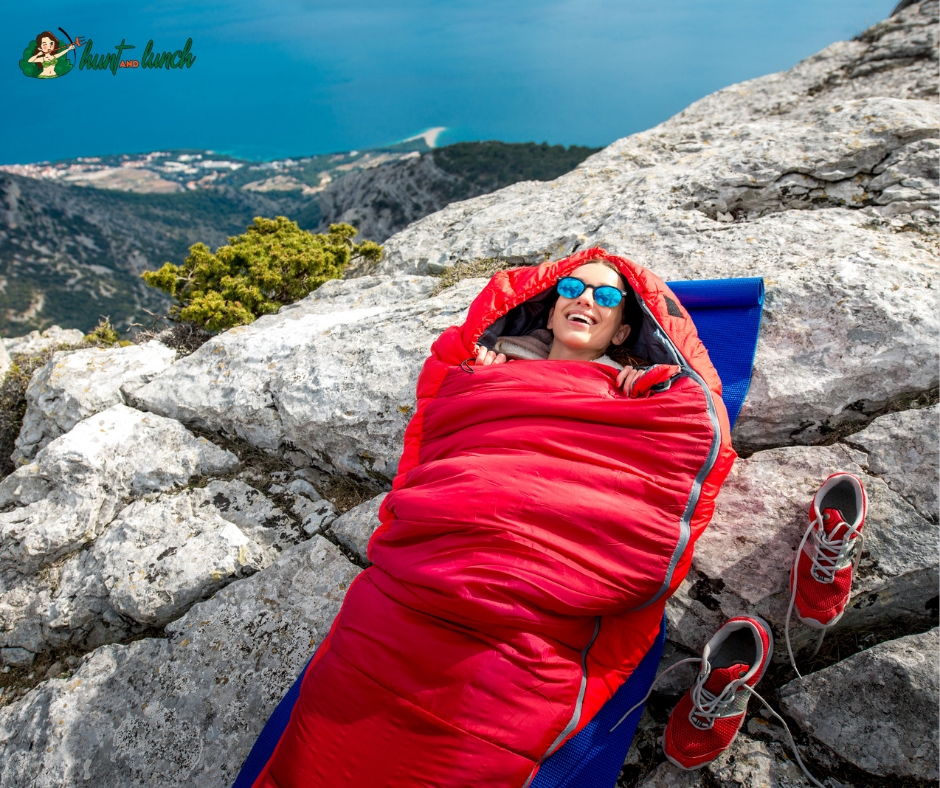
If you’re planning a camping trip, you might wonder how to stay warm at night. Sleeping bags are a great way to do that, but what should you wear inside the sleeping bag? Many people have strong opinions about whether it’s ok to sleep in clothes in your sleeping bag. So, should you wear clothes in a sleeping bag?
To answer this question, it comes down to preference. Aside from your choice, it also depends on what kind of gear you have and what type of weather exists outside your tent.
How Do Sleeping Bags Work?
They designed sleeping bags to trap the heat your body produces and prevent it from escaping. This creates what can be thought of as a microclimate inside your sleeping bag, where warm air circulates your body.
For sleeping bags to work, it often comes filled with down feathers or synthetic fibers. The more down feathers or synthetic fibers, the warmer the bag. However, this can also mean your sleeping bag becomes heavier.
Sleeping in a sleeping bag with your clothes on is a good idea. However, sometimes it can have a negative effect and eventually make you feel colder. Let’s look at when you should and shouldn’t wear clothes in a sleeping bag.
Why You Shouldn’t Sleep With Your Clothes On In A Sleeping Bag?
Just because you can sleep with your clothes on doesn’t mean you should. If you’re going to spend a night in the great outdoors, you must do so in a way that makes sense for the environment and your comfort. Here are some reasons and situations for you not to wear clothes when using a sleeping bag:
Wearing too many clothes
If you are trying to stay warm and comfortable in your sleeping bag, too many layers of clothes could be a problem. The baffles that separate the fill material from the shell on a sleeping bag help trap warm air and keep it around your body.
If you pack too much into your bag, however, these baffles will compress under all that weight, making it harder for the bag to perform its job correctly. This means there’s less room for warm air to flow and ultimately less insulation between you and cold outside air.
Ill-fitting clothing items
If you’re wearing clothes that are too small, they could cut off the flow of blood circulation, causing the body part to lose body heat faster and become colder. This will happen even if they’re not tight-fitting or constricting. The best way to avoid this is by ensuring all your clothes have plenty of room to breathe.
Moist clothes
A wet cloth or sleeping bag liner will cause you to lose heat. Moisture from sweat can cause sleeping bags to lose their loft, warmth, and waterproofing. It’s not just the moisture that is the problem but also the condensation created when the warm air inside your bag meets with colder surfaces.
If you wear a damp set of clothes at night, this will accelerate moisture build-up on the inside of your sleeping bag and increase condensation, which compromises its insulation performance. You should avoid this by avoiding wearing damp clothes or adding a towel or other dry item at night.
Using the wrong sleeping bag
Using the wrong sleeping bag can have serious consequences. Using a sleeping bag that is too small can lead to you needing to be able to move around enough. This reduces your comfort and could cause you to lose warmth in the middle of the night with numb limbs or cold feet.
Using a sleeping bag that is too big won’t be as warm because there will be too much space between yourself, your clothes, and the bag itself. Similarly, trying to save weight by using something lighter than necessary for whatever conditions may result in waking up with damp clothes from sweat due to overheating.
What Should You Wear to Bed Instead of Clothes?
Now that you know what not to wear with your sleeping bag, here are some suitable options for you to consider:
A clean and dry set of clothes
If you have to wear clothes in a sleeping bag, ensure your clothes are clean and dry before putting them into the bag. This way, you are sure of not introducing moisture into your bag, and you stay warm and toasty all night long.
Wear merino wool long underwear
Merino wool is a natural material used to make long underwear. It is soft, comfortable, and breathable. Also, it’s odor resistant, which means your clothes will stay fresh smelling when you wear them while sleeping in a sleeping bag.
Avoid bulky layers
It can be tempting to layer up with heavy jackets and hats when trying to stay warm. But this approach has a lot of drawbacks. It makes you more likely to overheat when you start moving around in your sleeping bag, increasing your chances of sweating. And sweating adds extra moisture to your bag leading to loss of insulation.
Light Jacket or Sweater
A light jacket or sweater is another great way to keep warm at night. If the temperature drops, you can take it off and use it as a blanket instead. Wearing a light jacket in a sleeping bag will help keep your upper body warm, but only if they cover all of your exposed skin at once.
Winter hat
A hat is essential for keeping your head warm in a sleeping bag. You can wear a hat inside the sleeping bag, but it should be thin, so it doesn’t compress the insulation. Some people prefer to wear their hats outside their bags, which will help keep heat from escaping through their heads. But if you’re wearing an insulated hood on top of this, there may be a few advantages left over from adding an extra layer of protection around your ears and neck.
Thermal underwear
This undergarment is made from synthetically created fibers that naturally wick moisture away from your body so that it evaporates quickly. Doing so effectively keeps you dry inside your sleeping bag throughout the night. The best way to choose which thermal underwear is best for you depends on how much money you want to spend and how often you will be using it.
Conclusion
While sleeping in clothes is possible, it’s not a good idea. You should always wear your clean and dry clothes to bed instead. If you have to sleep in a sleeping bag because of poor weather conditions or an emergency, be sure they are clean and dry, and avoid wearing bulky layers that may make you feel uncomfortable.

I’m Cindy, a free-spirited outdoor enthusiast. Since childhood, Our family frequently goes on weekend camps and my father, who was a skilled hunter, used to teach my siblings and me valuable things about wildlife survival. I made this blog to share my knowledge, experiences, and tips.






